Paging through catalogs from Sears, Montgomery Ward, and JC Penney, let’s follow the rise, fall and rebirth of the home video game and electronics market. From the game that started it all, Pong, in 1975, to the crash of ’83, and the Nintendo Renaissance of ’86 – you can witness it all in the pages of Christmas catalogs…
1975
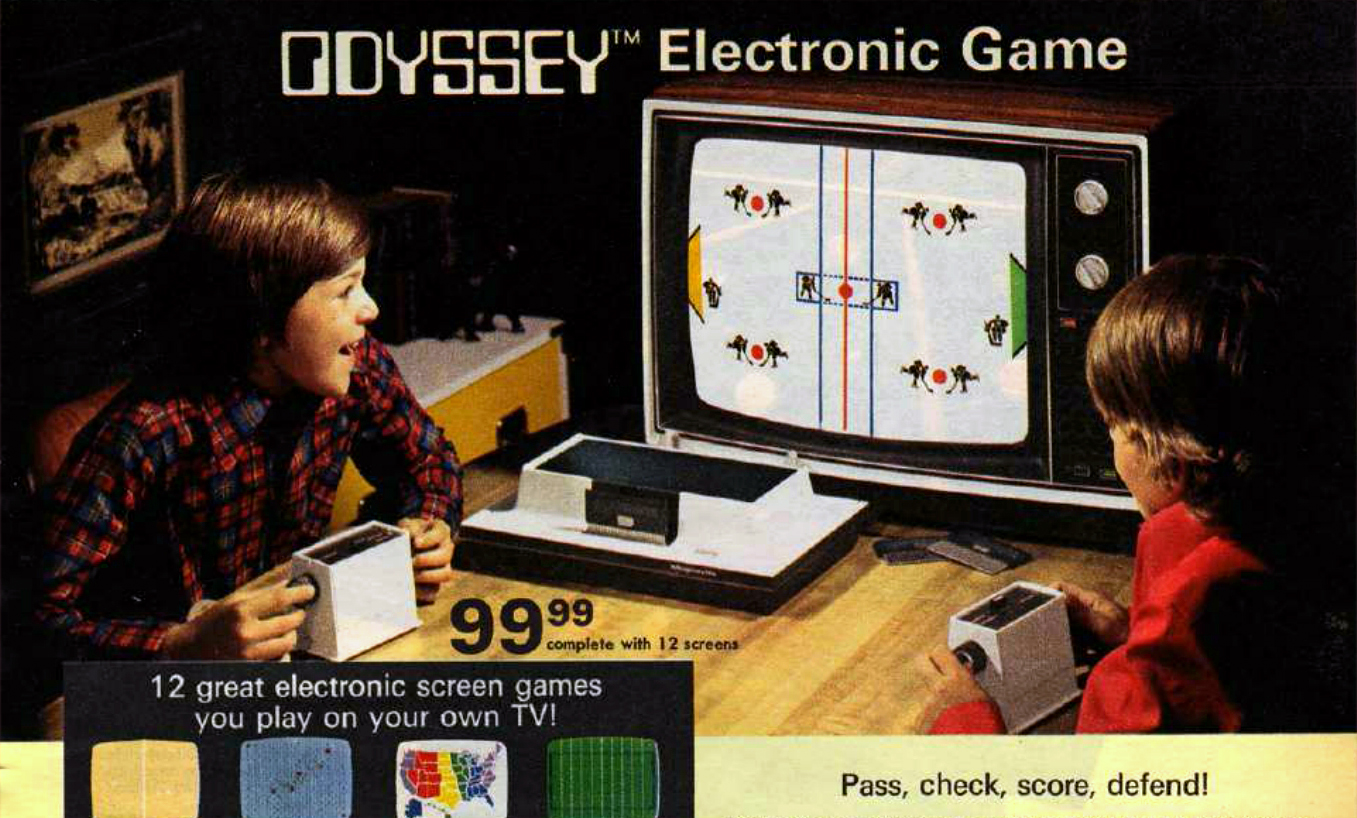
Adjusted for inflation, this Odyssey Electronic Game is nearly $450/ 333 GBP. Those are some crazy looking controllers.
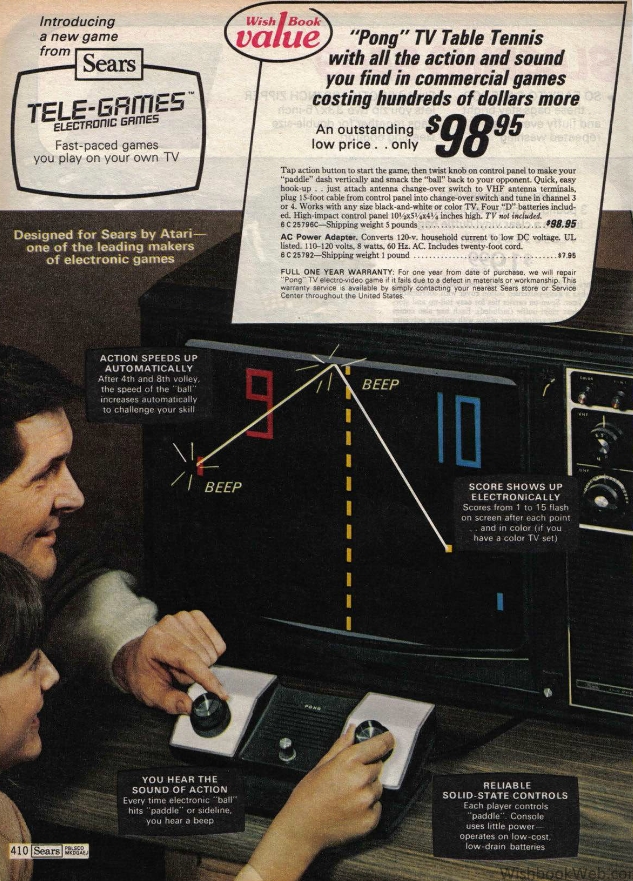
You might say this is what started it all. During the 1975 Christmas season, Atari released a home version of Pong exclusively through Sears retail stores and catalog, and it was a massive success. Atari had first contacted toy stores to sell their product, but the retailers felt it was too pricey. Atari reps noticed that Montgomery Ward was selling the Magnavox Odyssey (previous, above) in the sporting goods section of the catalog, so approached Sears.
It was a big seller, with approximately 150,000 units sold during the holiday season. Subsequently, Magnavox sued Atari for copying them.
1976
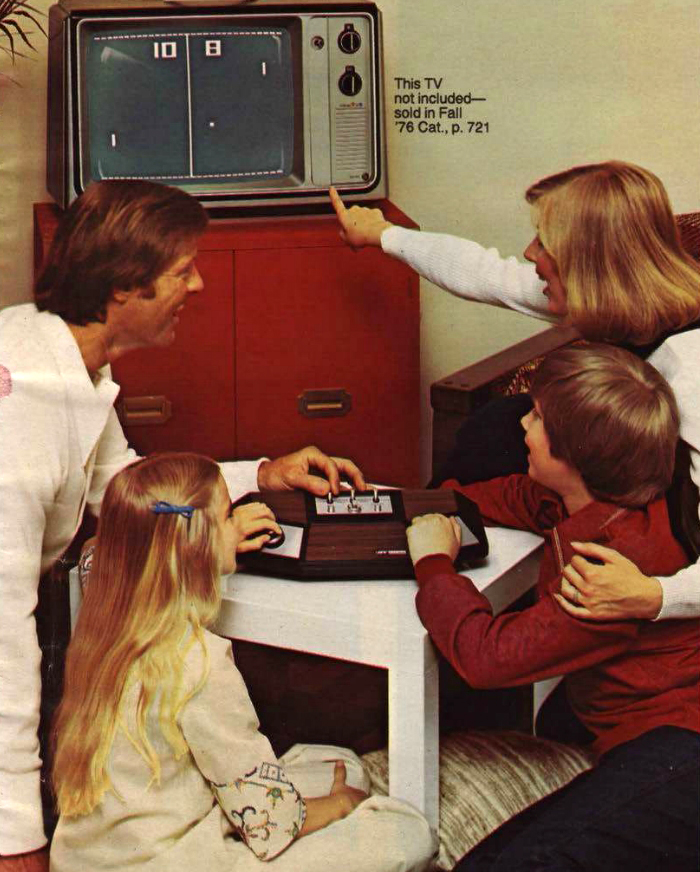
“TV Fun” was JC Penney’s answer to Sears’ Atari. This sold for just $60. It attached to the VHF antenna and required batteries.

1977
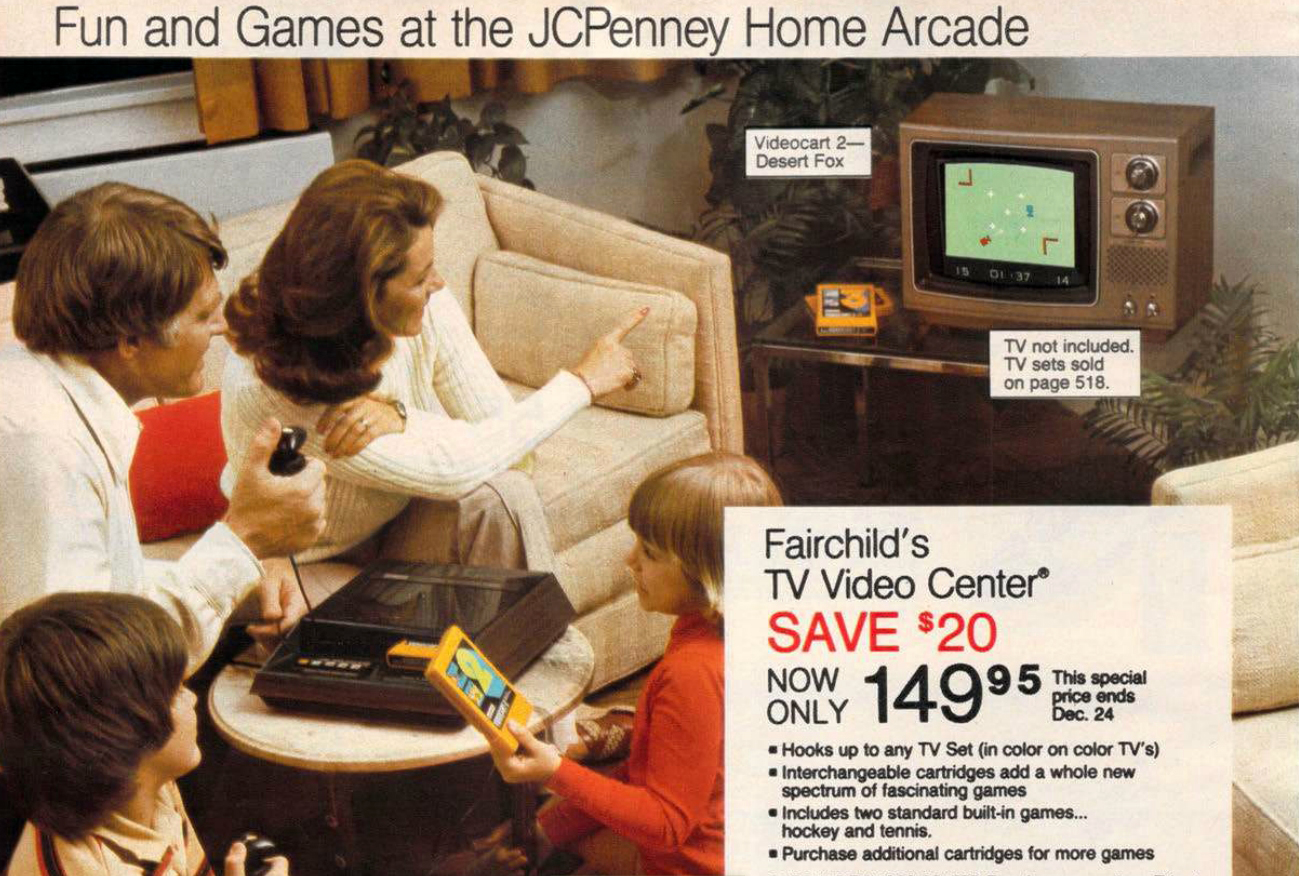
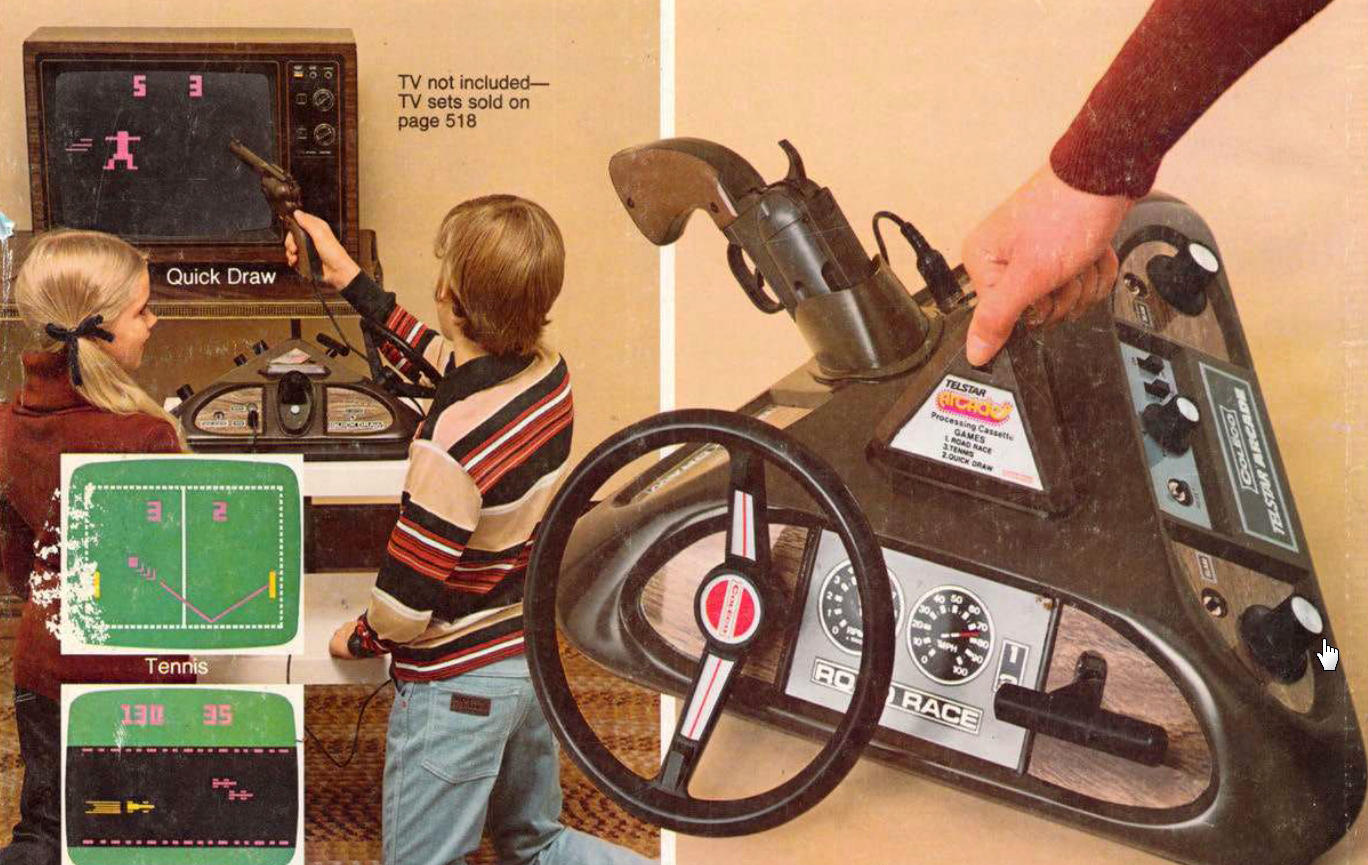
The Telstar (above, JC Penney) was the entry point for another big name in the home video game market – Coleco.
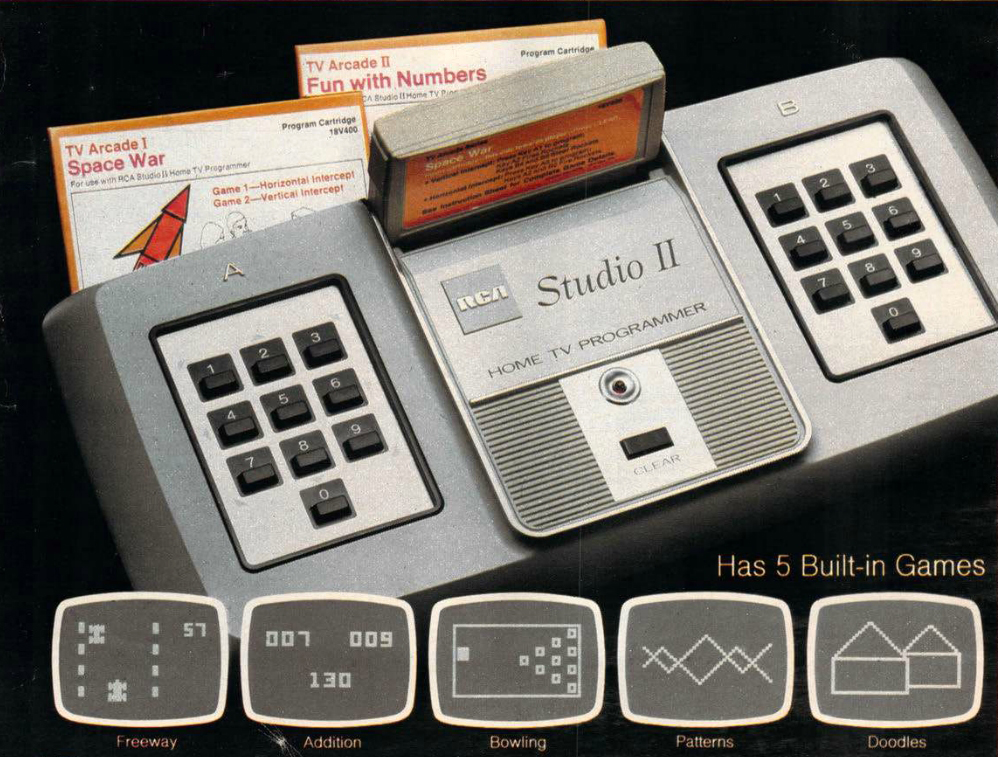
The Studio II was weird: it had no joysticks and the graphics were black and white. It was a total disaster for RCA, who had to lay off 120 employees and unloaded the remaining stock to Radio Shack for fire sale.
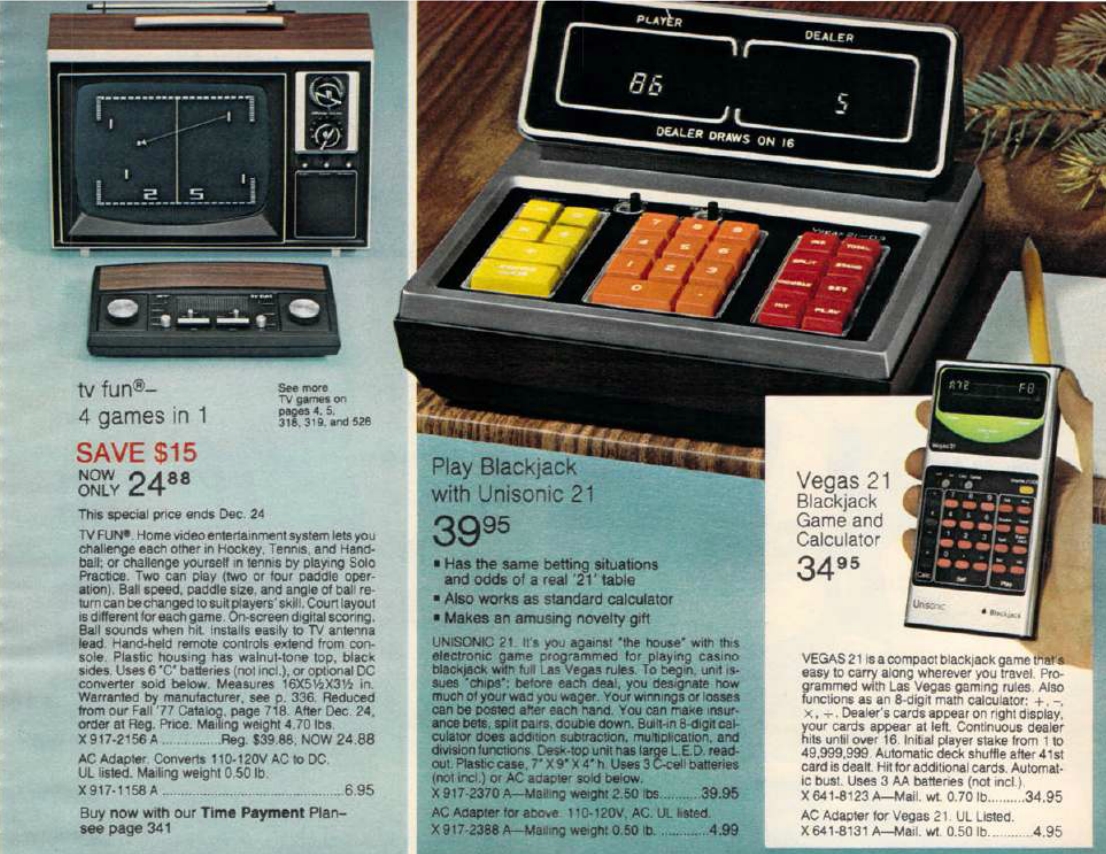
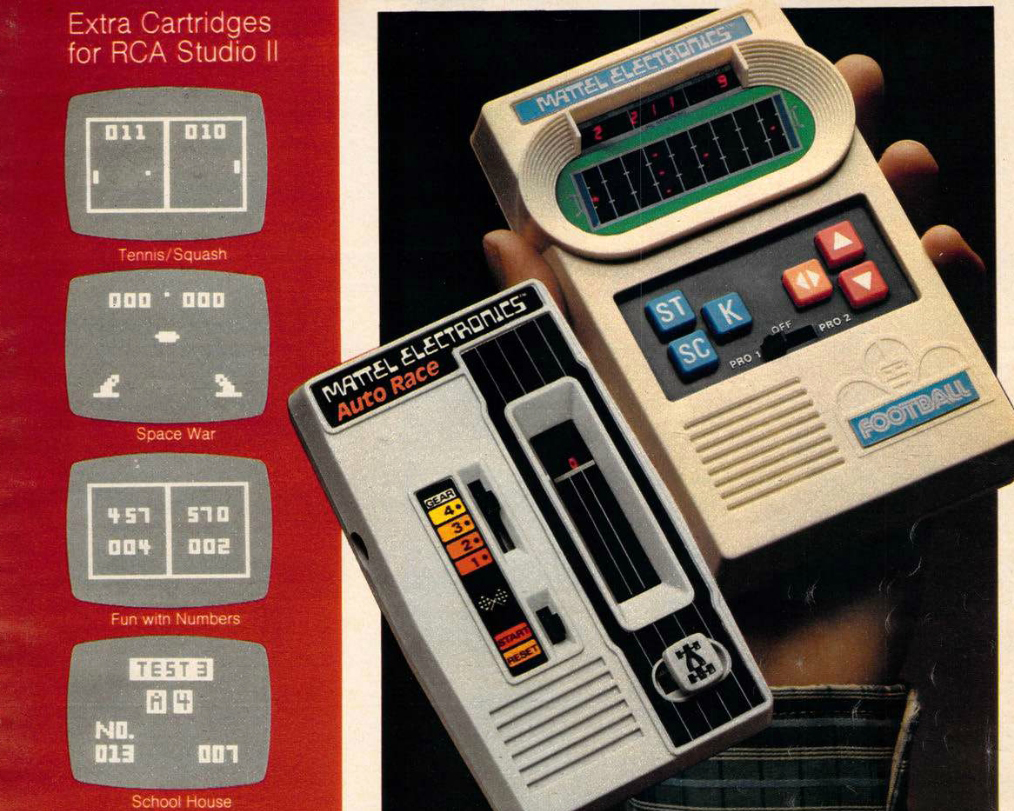
Suddenly these handheld electronic games were everywhere, such as the ubiquitous Mattel football game – every school bus in America had at least one kid playing this game after Christmas ’77.
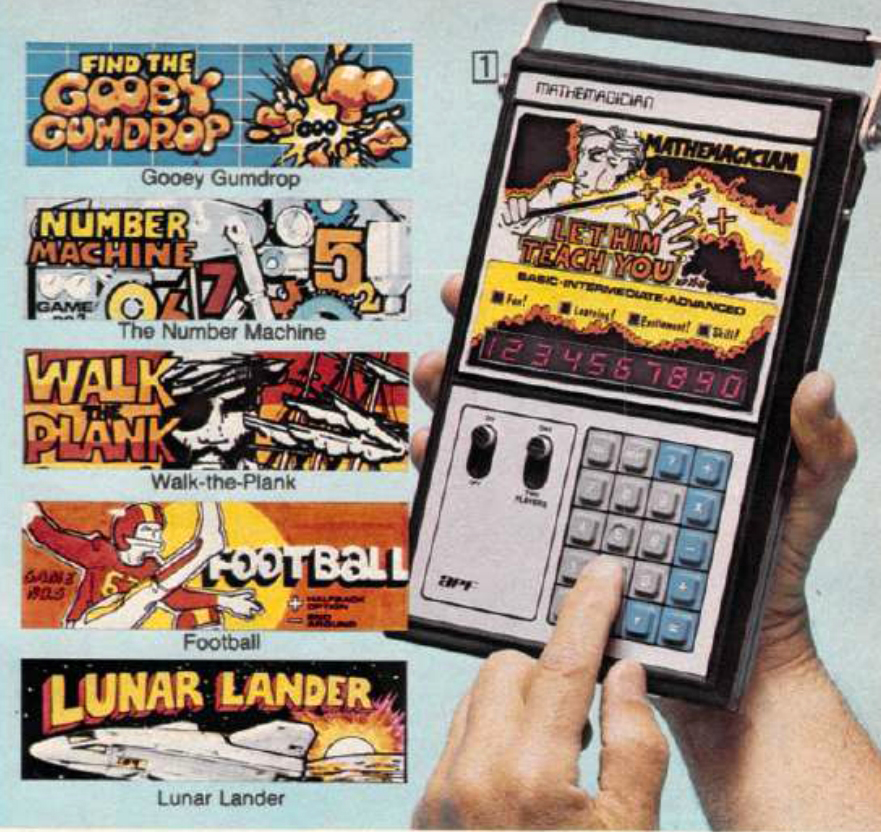
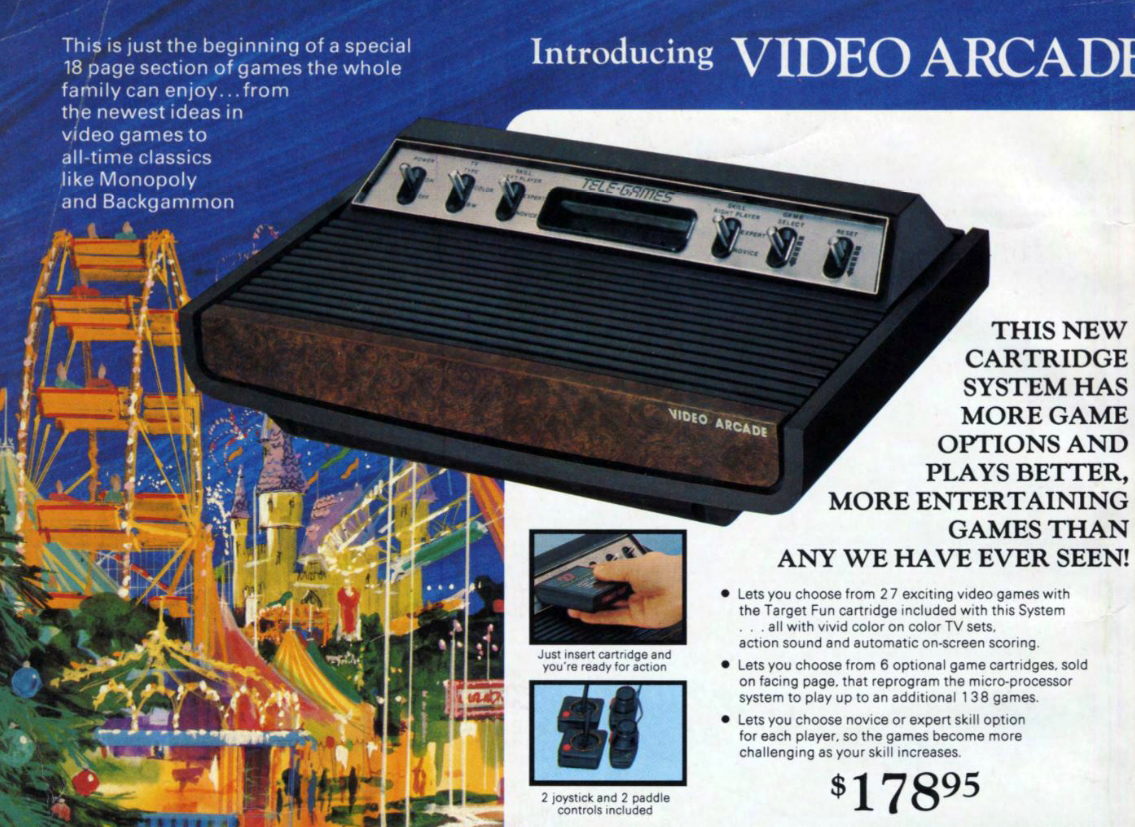
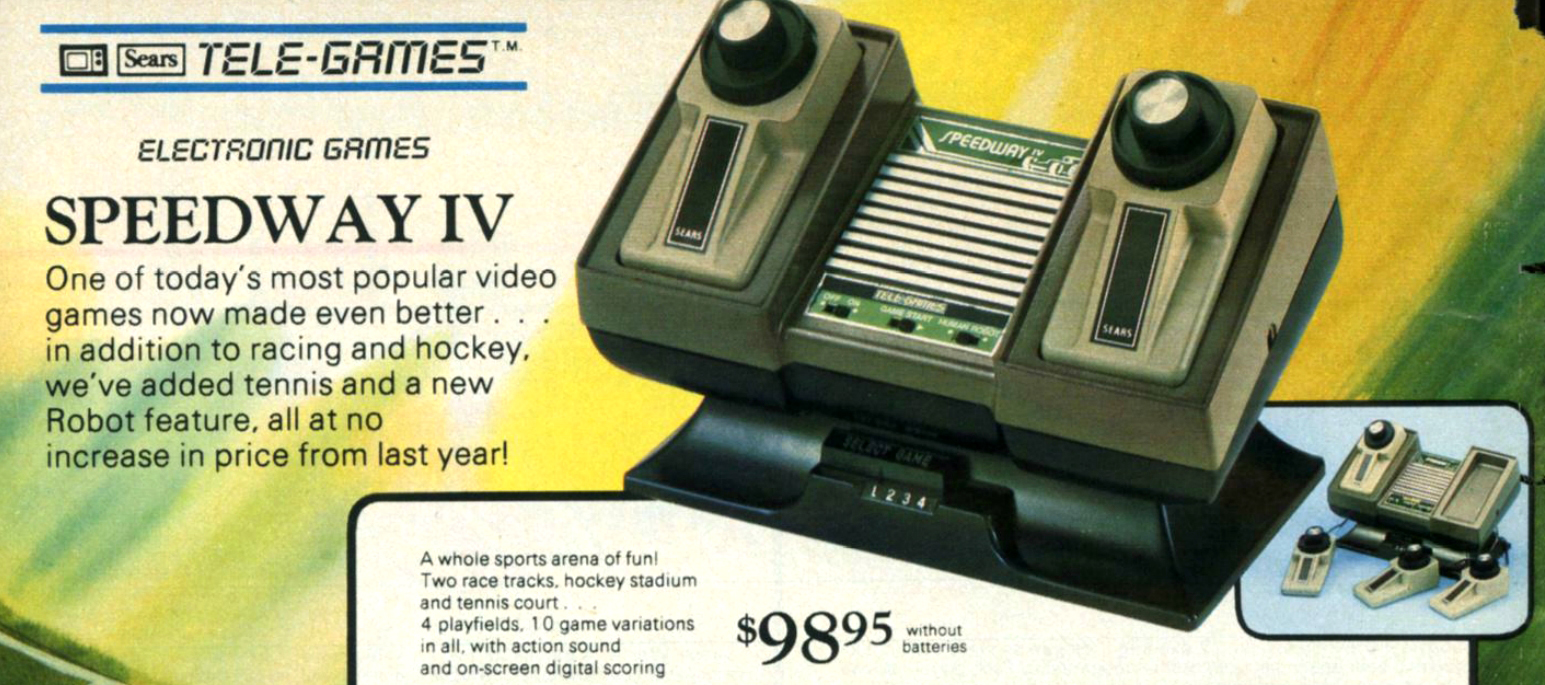
Atari was able to drop the lame “Tele-Games” label everywhere but Sears.
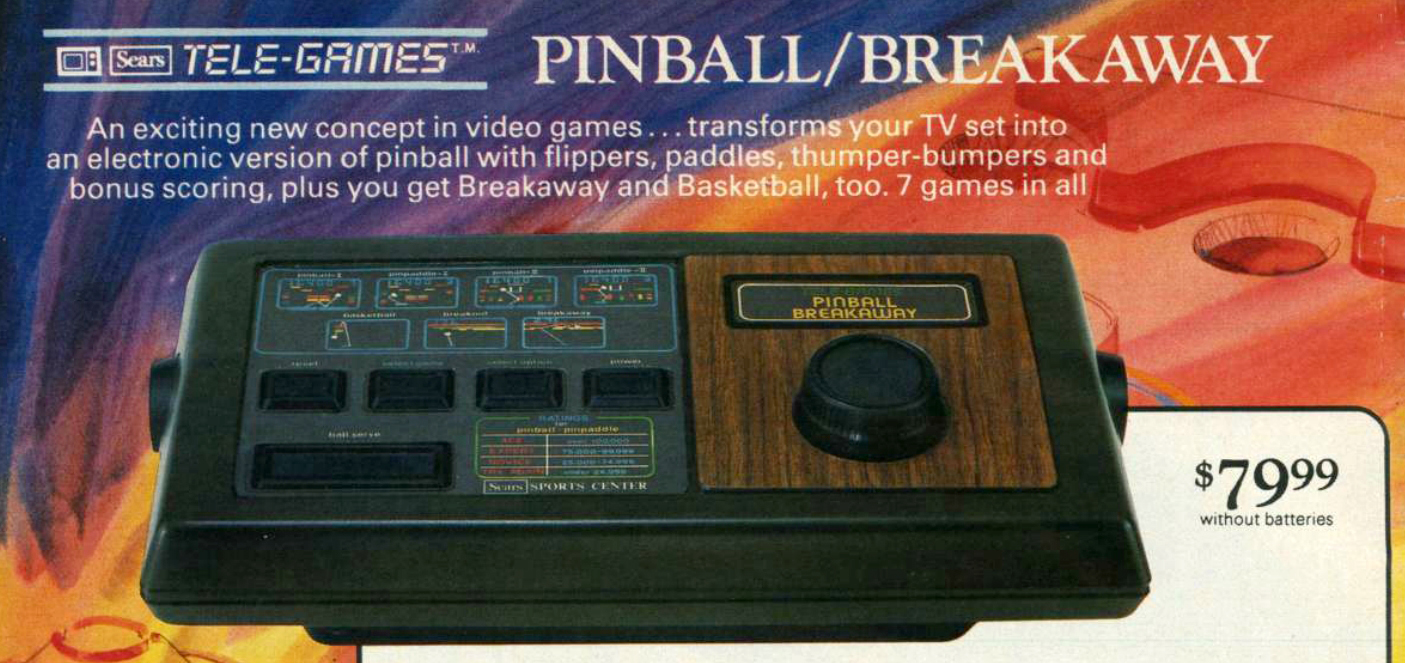
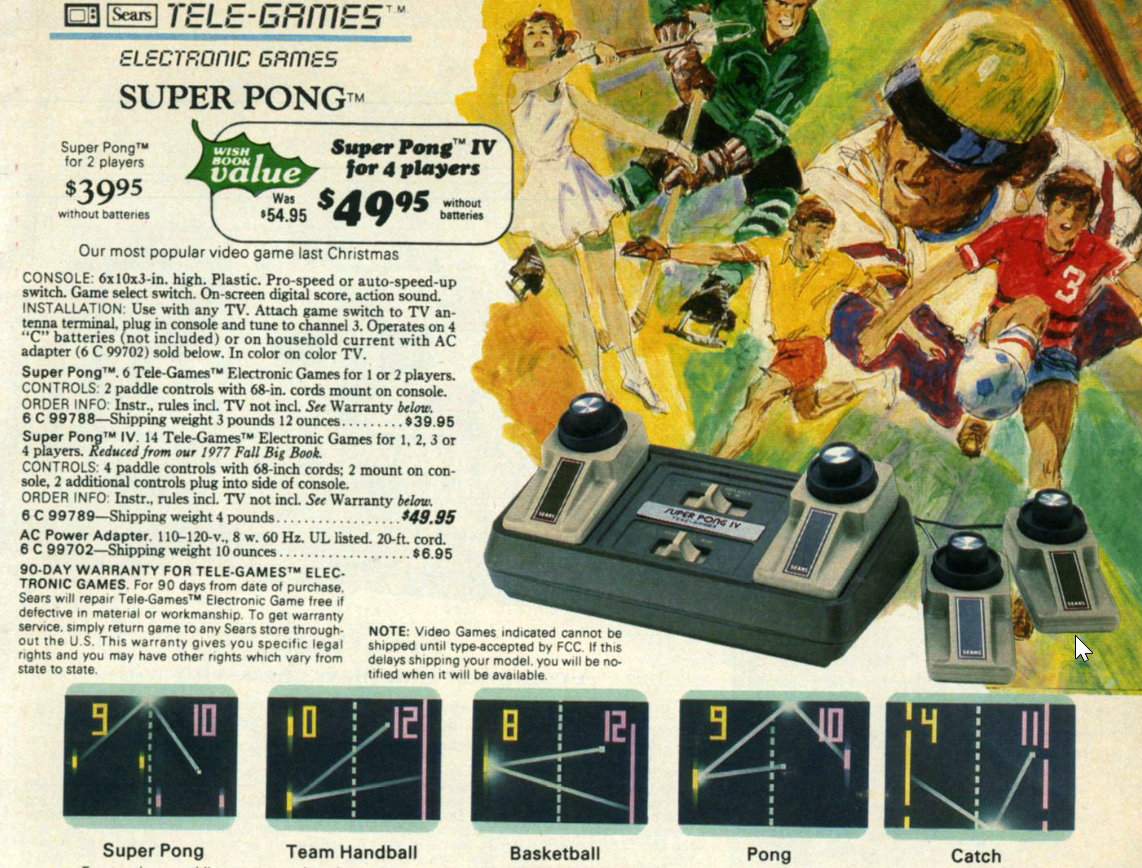
1979
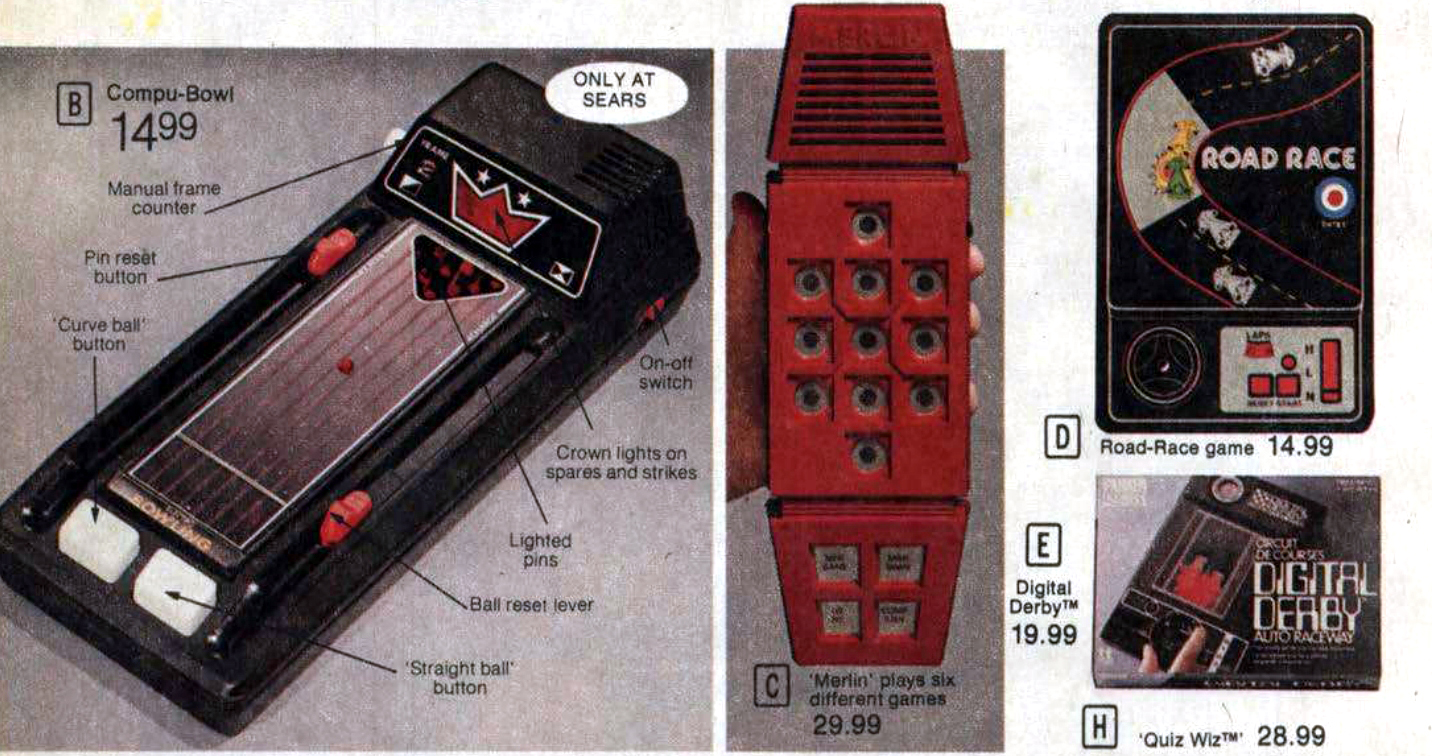
Who doesn’t remember Merlin? Invented by a NASA employee and released by Parker Brothers, it sold over five million units on its initial run. Merlin could play Tic-Tac-Toe, a game similar to Simon, Blackjack, and even musical notes.
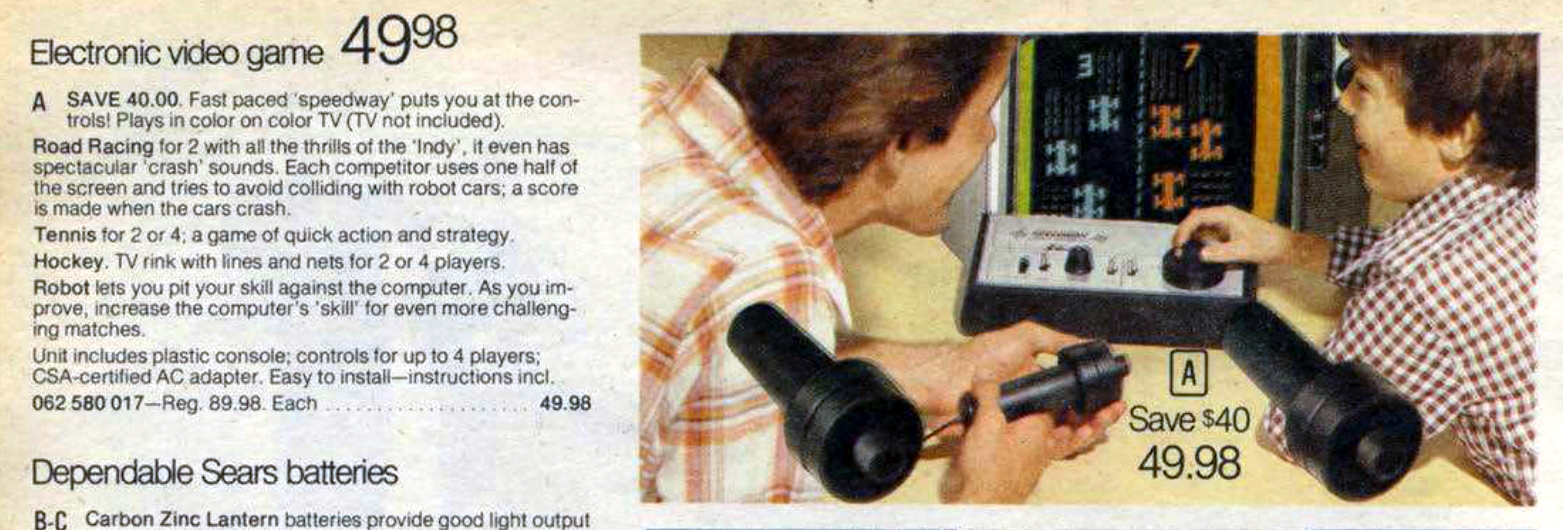
1980
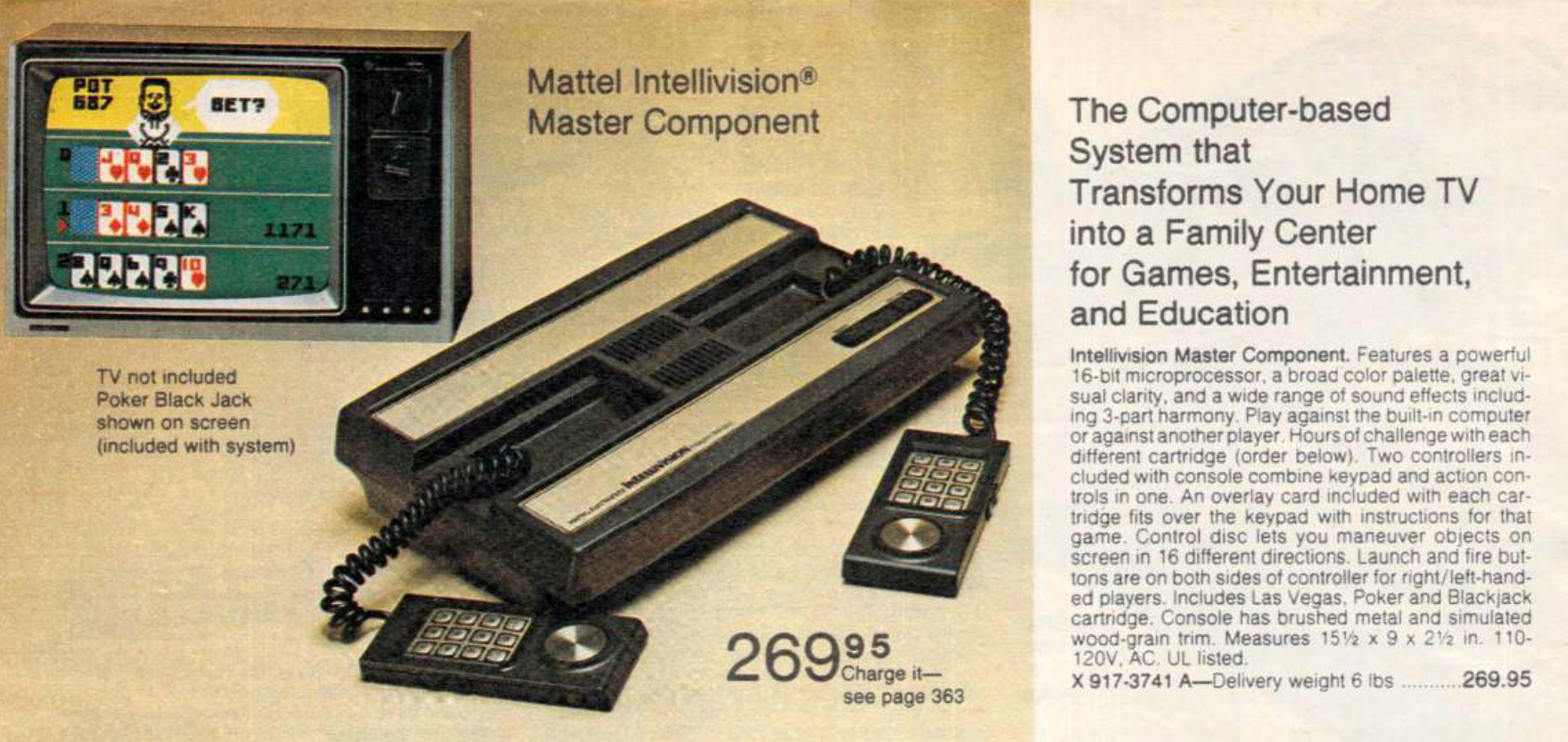
The Intellivision famously had commercials showing their video game graphics side-by-side with Atari’s. They clearly had a better look, but was more expensive.
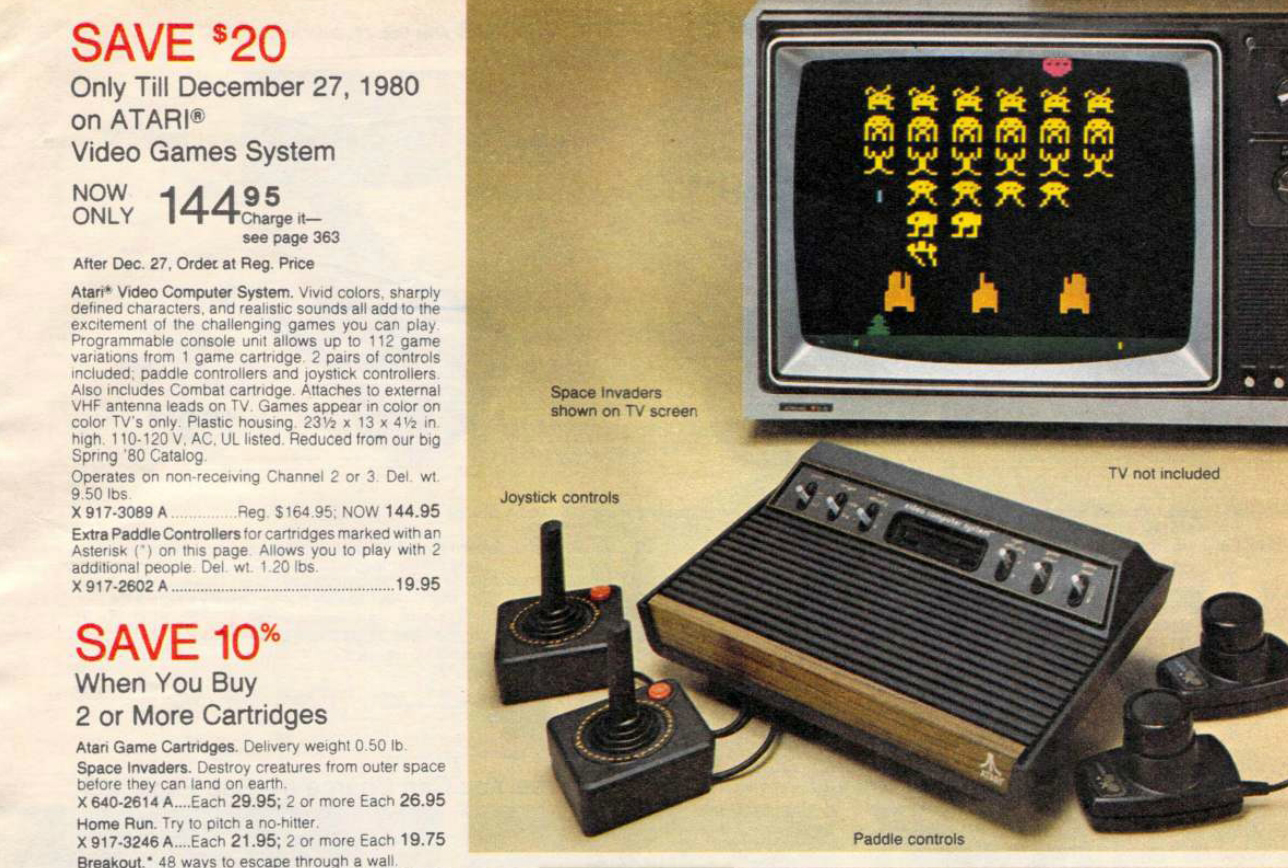
Pong ’75 is where it all began, and Christmas ’80 is where the lid blew off. People were going buck wild for Atari this year. Space Invaders, Missile Command, Defender, Combat, Breakout, Asteroids… this is when home video games really became a fixture in the American home.
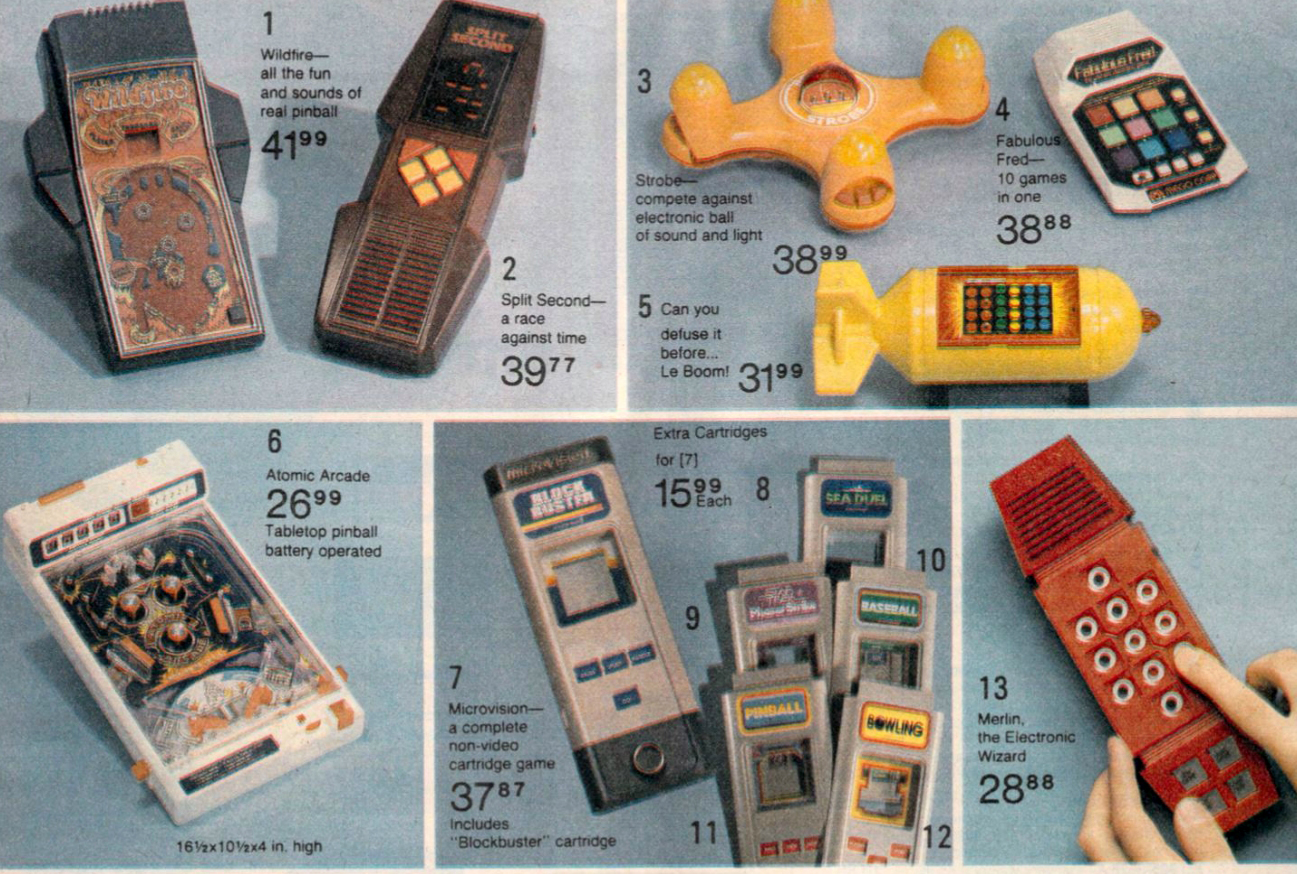
1981
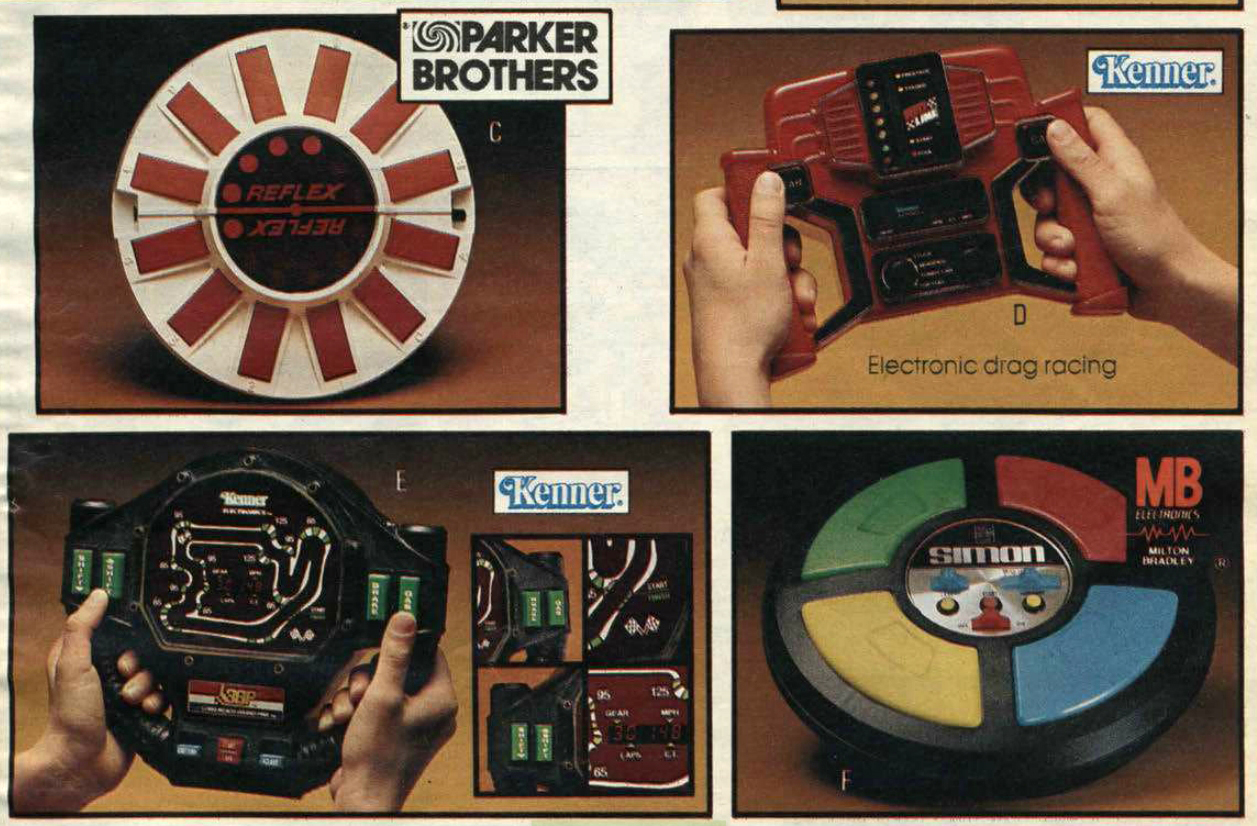
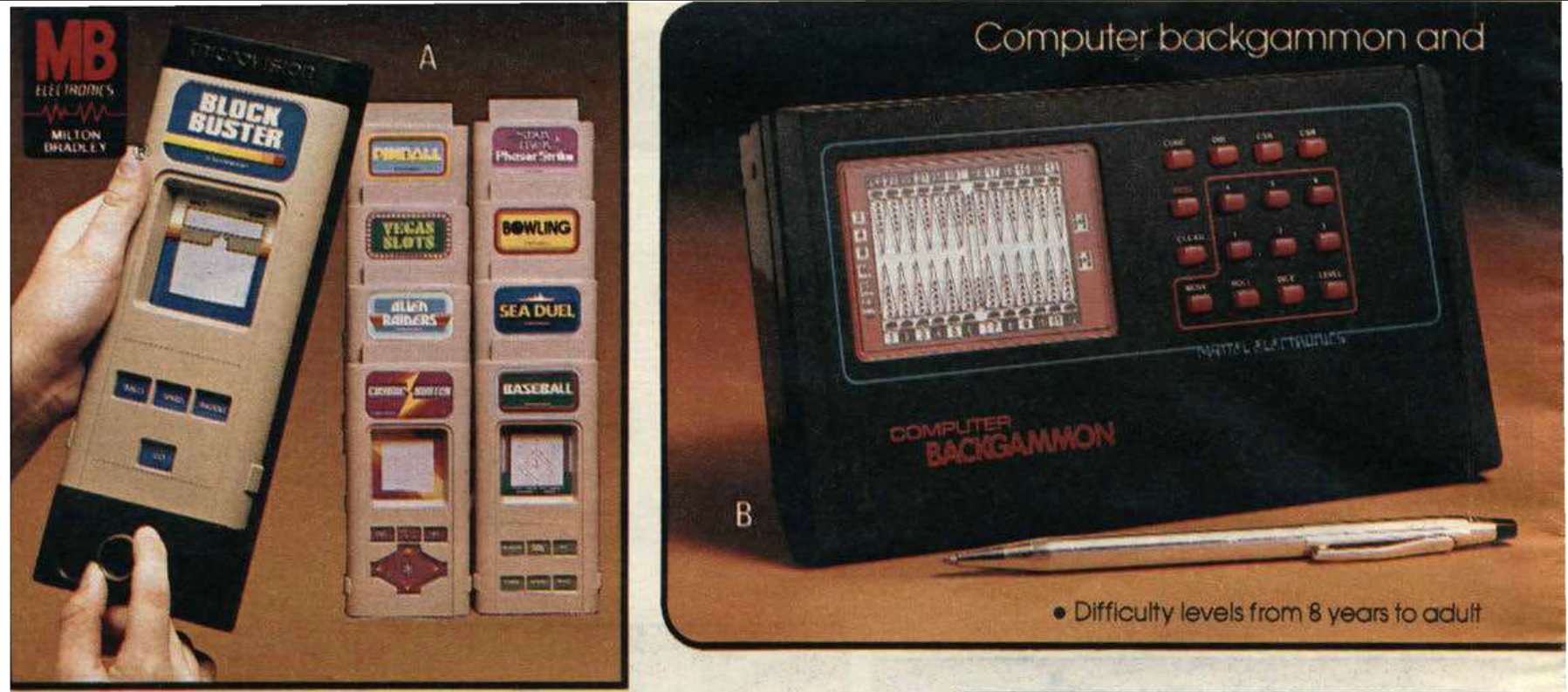
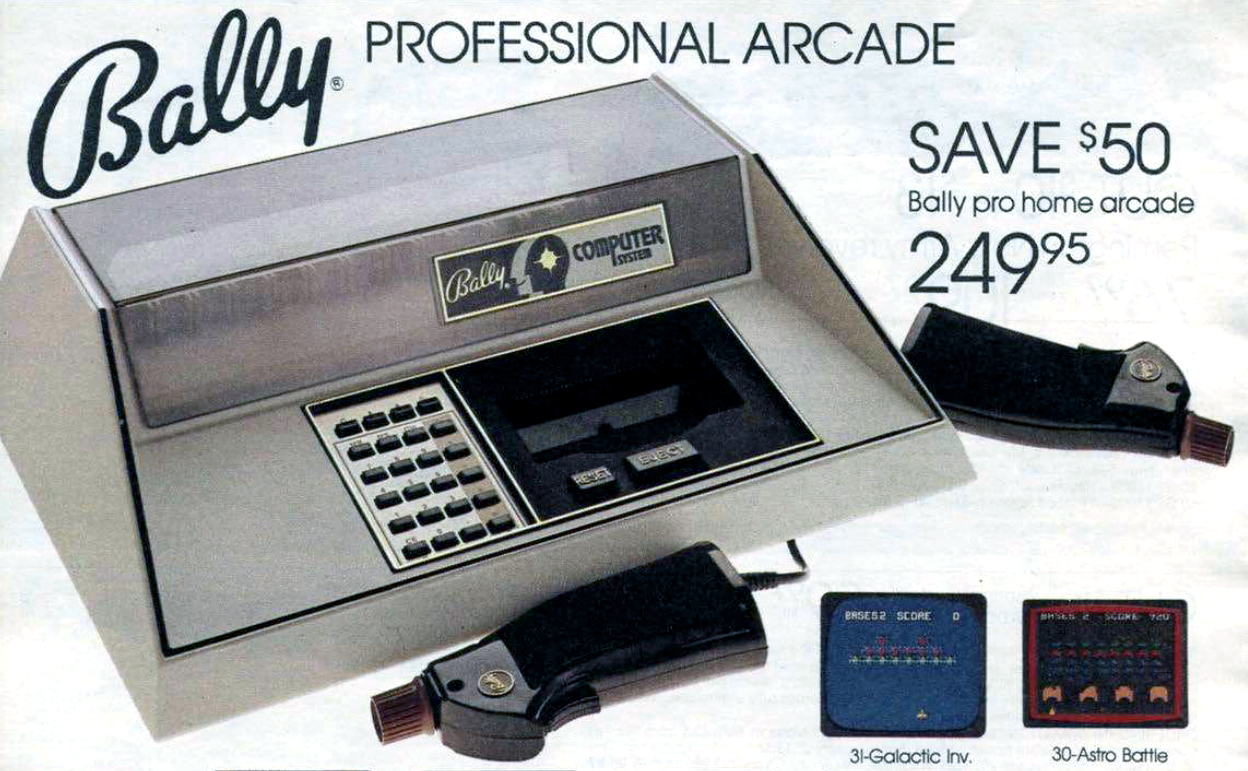
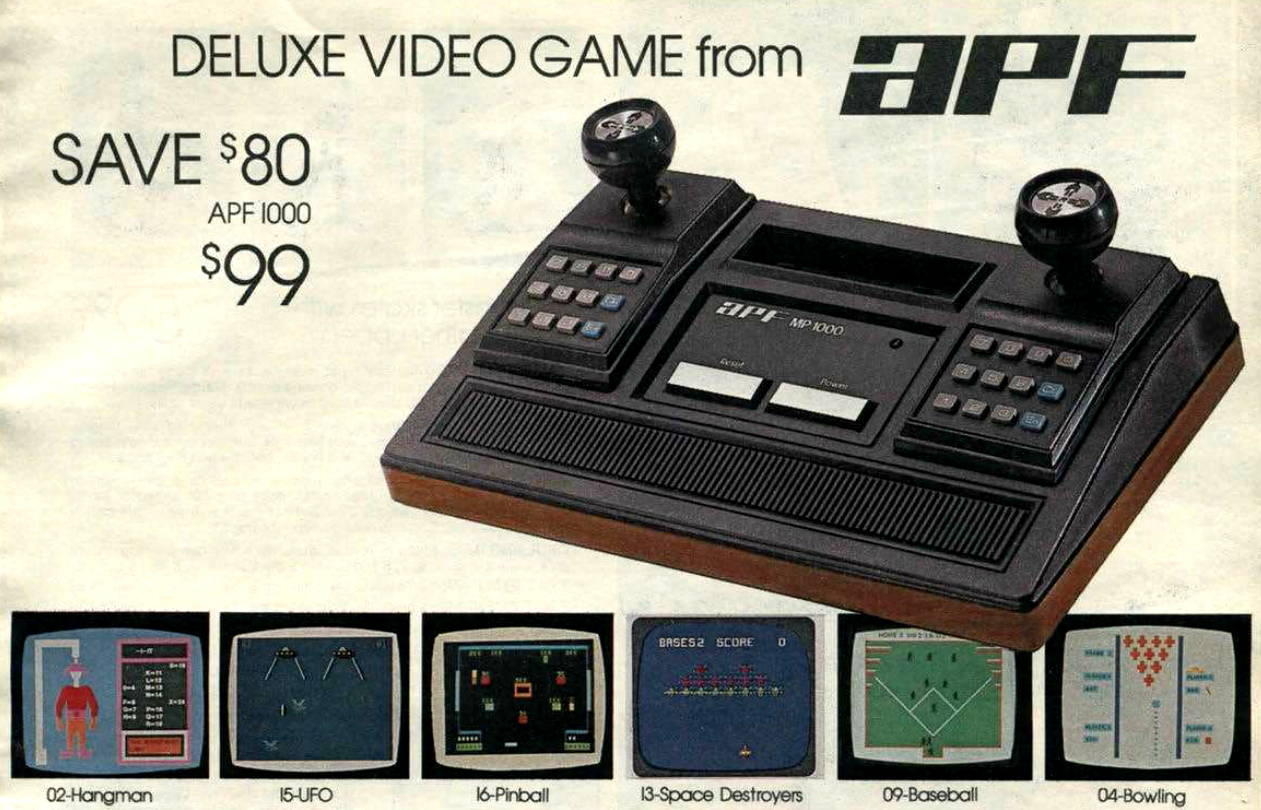
The APF-MP1000 was the successor to the Tele-Fun system.
1982
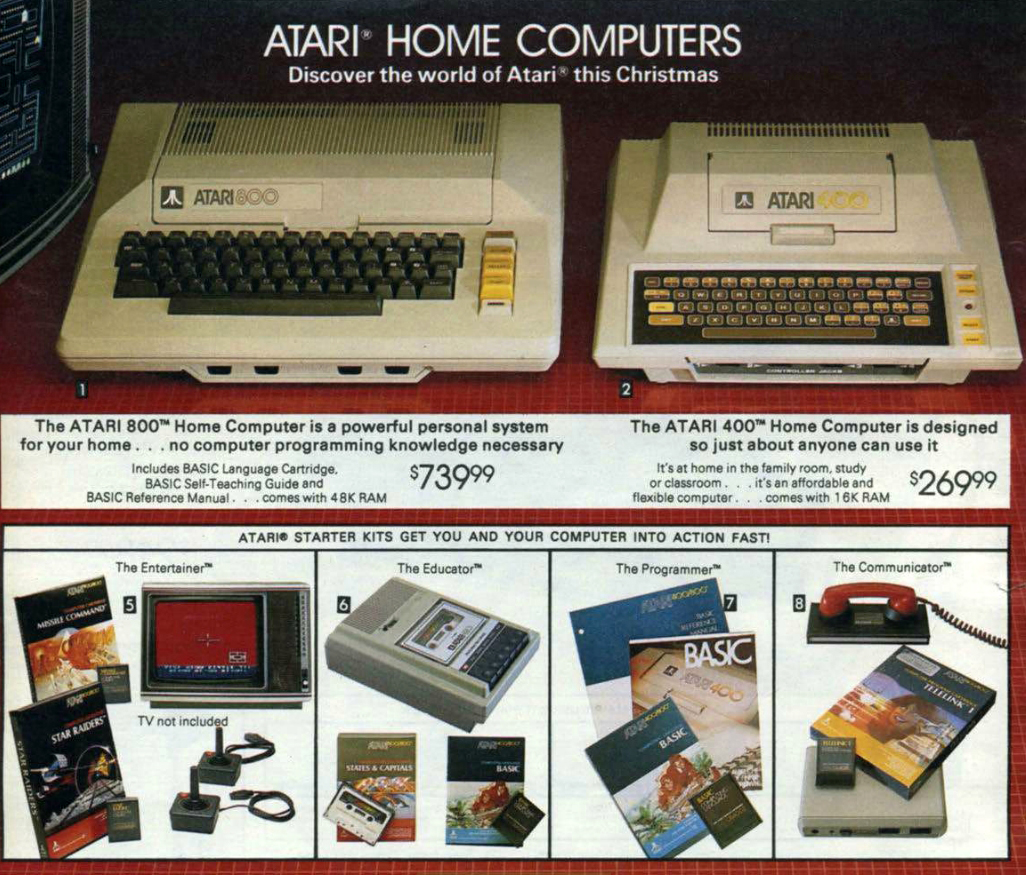
The holiday season of 1982 saw home computers rolling off the shelf, with even Atari (above) getting in on the action. This is when computers like the Commodore 64 and VIC-20 dropped their prices drastically, contributing massively to the crash to come the following year.
1983

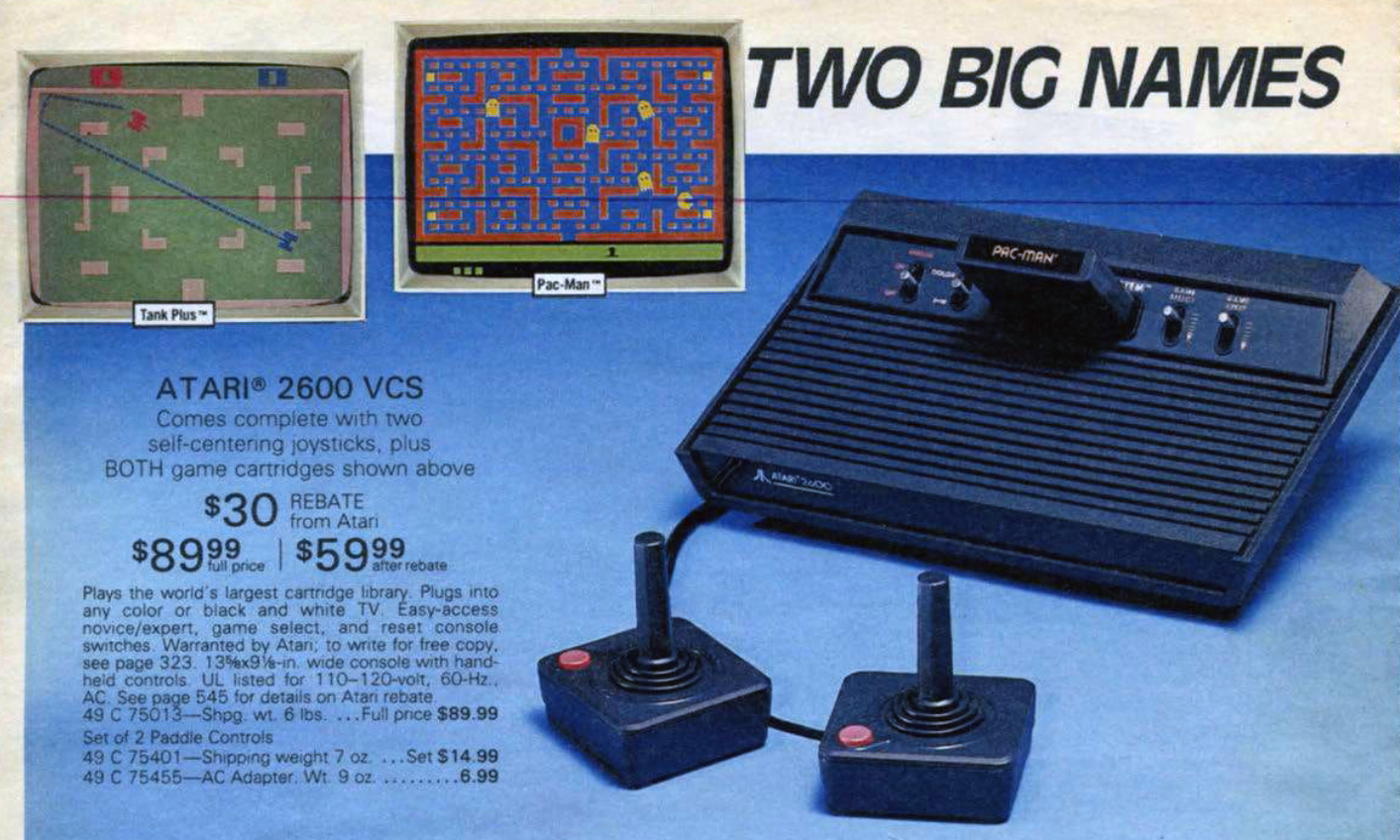
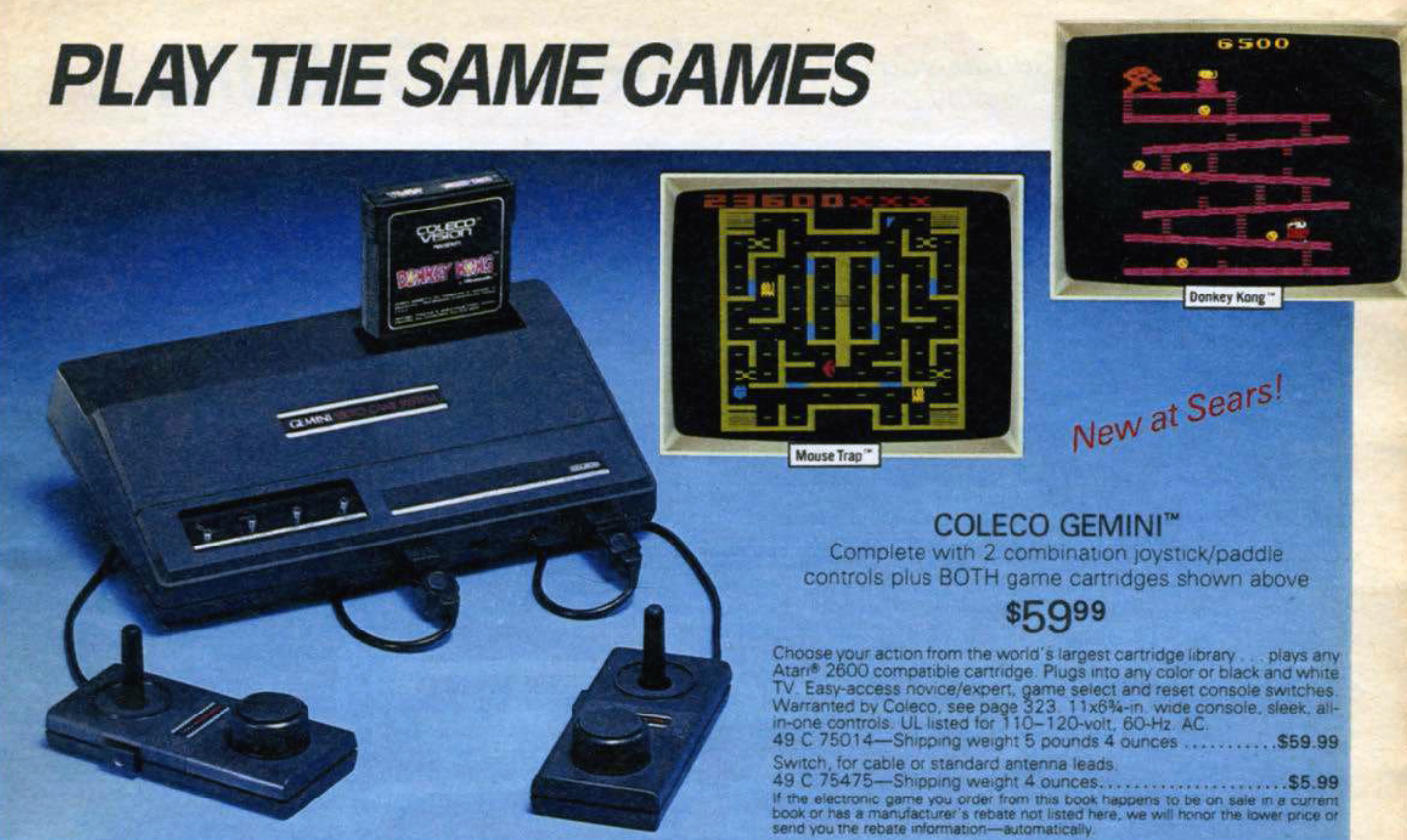
“Two Big Names – Play the Same Games”. Colecovision offered better graphics than the Atari 2600, and sold a million units by the end of the holiday season of ’83. Surprisingly, it only lasted a couple years after that. Over-saturation of the market caused the “Video Game Crash of 1983”, and newer companies couldn’t withstand the hit The bubble burst, with revenue dropping 97 percent – a recession lasting until Nintendo reinvented the scene in 1987.
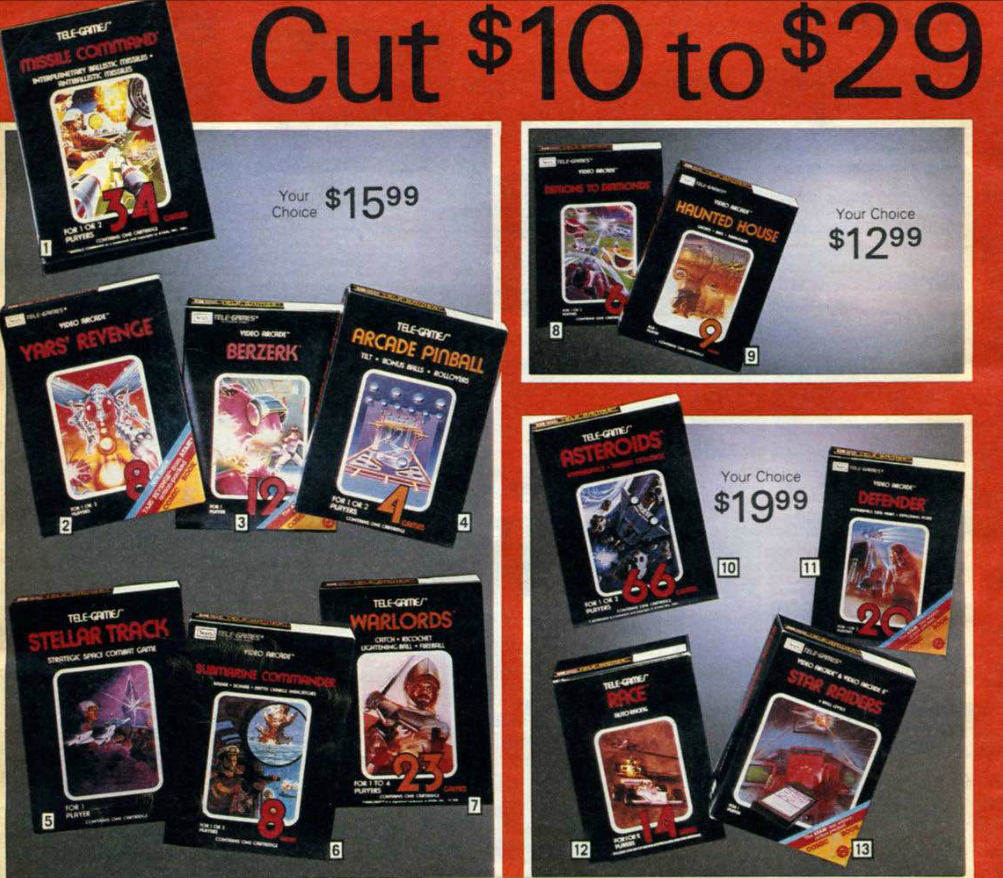
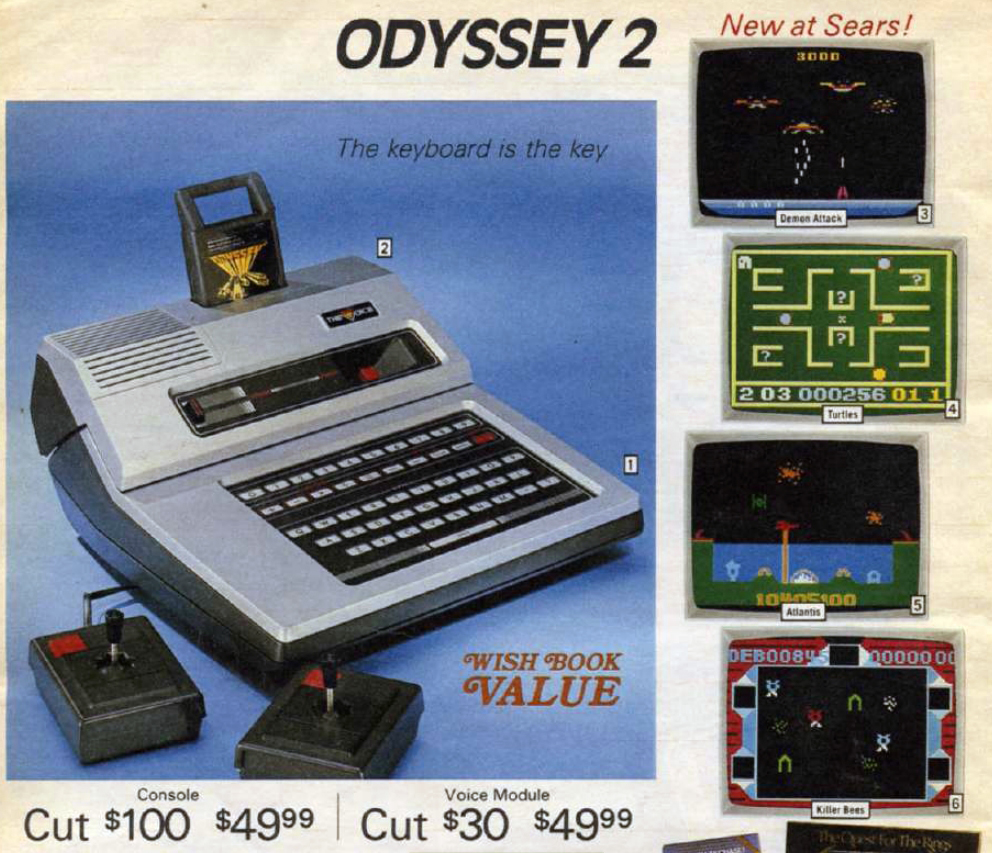
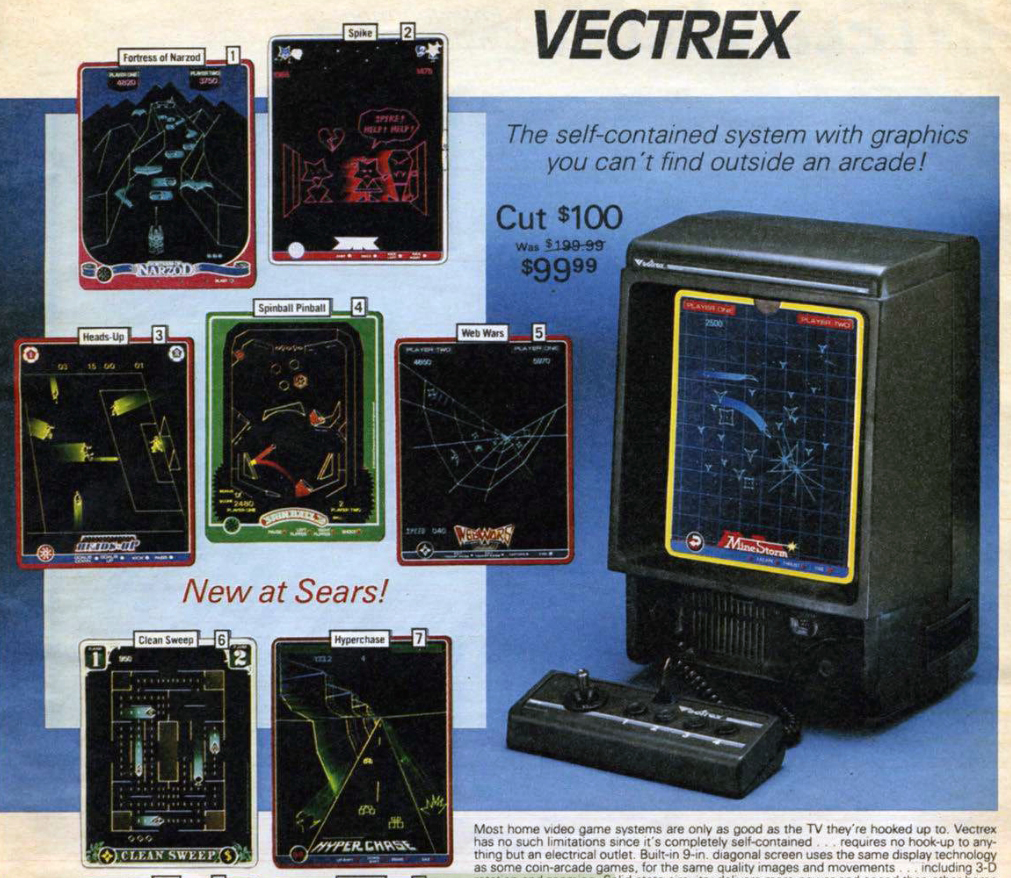
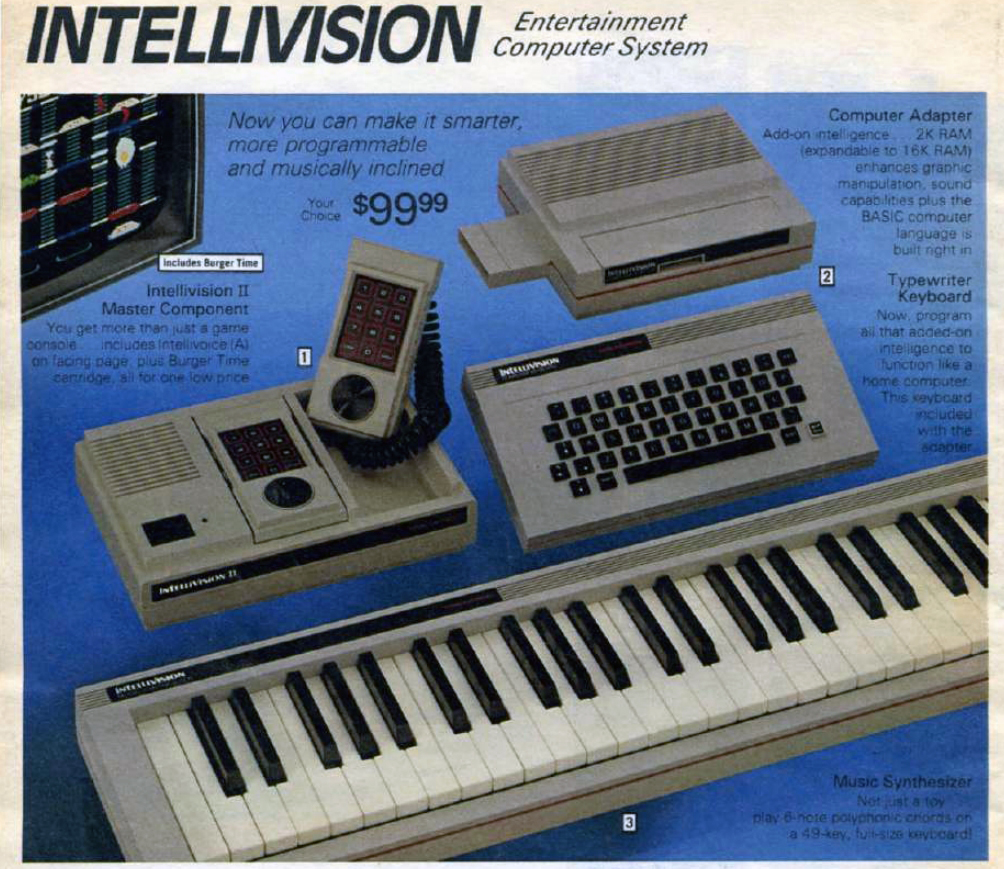
Yes, it was an embarrassment of riches this year… and a bubble that was bound to burst. A market totally saturated with a million-and-one game systems, plus competition from home computers, major-league inflation, and a chaotic flood of third-party game developers releasing products of varying levels of quality, from great to total shit… it was a perfect storm which brought down even the mighty Atari. The crash is epitomized by the epic pile of 700,000 E.T. the Extra-Terrestrial cartridges loaded into a New Mexico landfill.
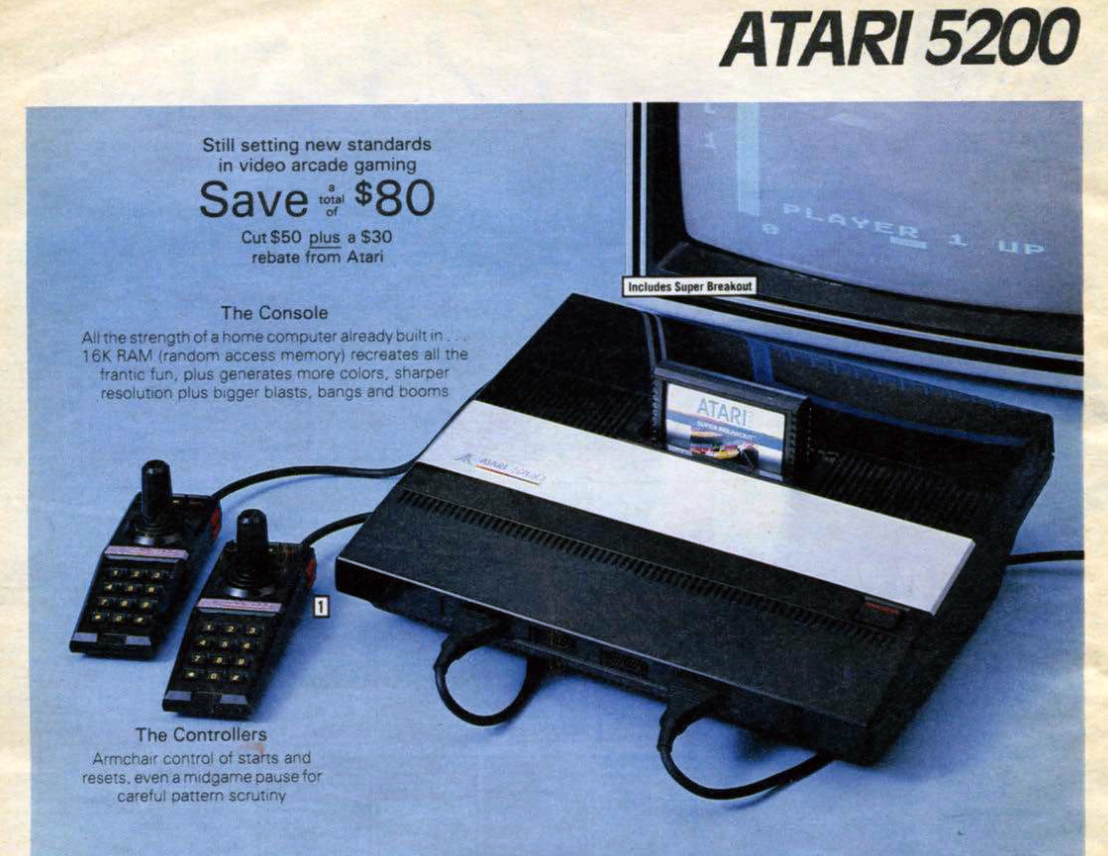
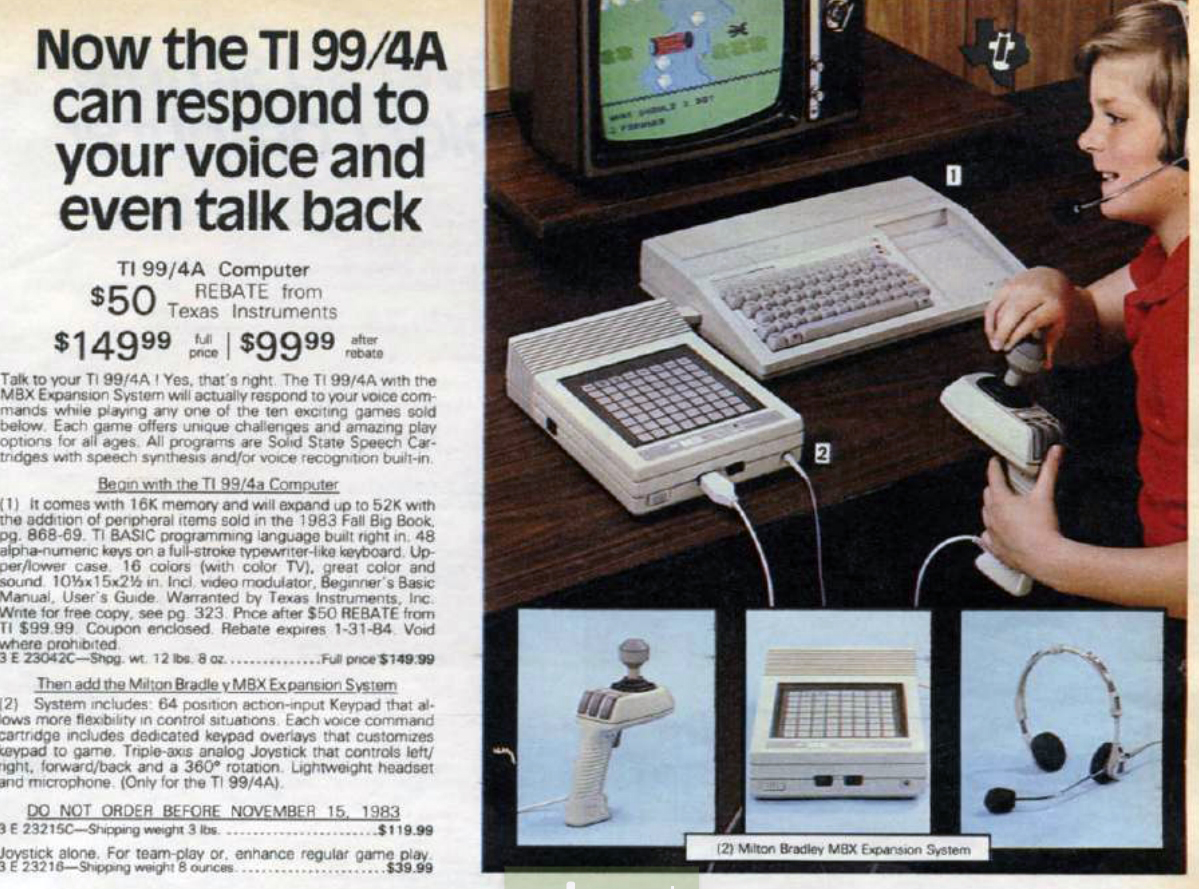
1986
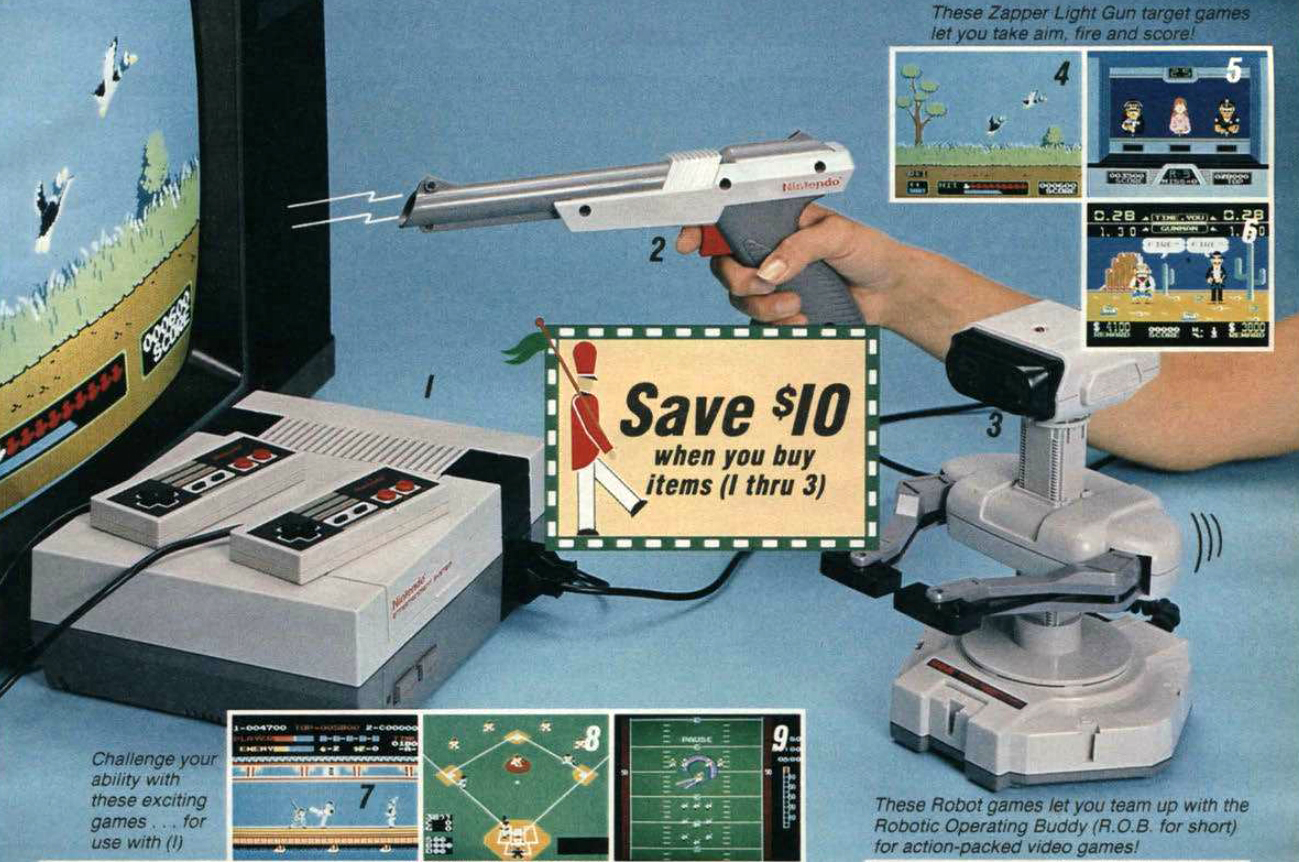
Nintendo saves the day. With the release of Super Mario Bros. in Japan in 1985, the home video game market is resurrected from the crash. Nintendo learns from Atari’s mistakes, and doesn’t let third parties make games for their system… and the rest is history.
Would you like to support Flashbak?
Please consider making a donation to our site. We don't want to rely on ads to bring you the best of visual culture. You can also support us by signing up to our Mailing List. And you can also follow us on Facebook, Instagram and Twitter. For great art and culture delivered to your door, visit our shop.









